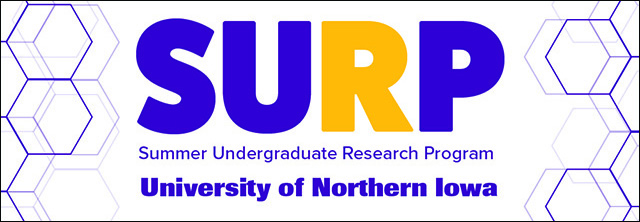
2021 Summer Undergraduate Research Program (SURP) Symposium
Location
Ballroom, Maucker Student Union, University of Northern Iowa
Presentation Type
Open Access Poster Presentation
Document Type
poster
Abstract
Typical kit-based DNA extraction techniques only isolate ~17% of the total starting DNA from a sample. When analyzing environments with few microbial cells, such as Wind Cave National Park, South Dakota, this approach is ineffective. In this study, we developed a modified DNA extraction protocol in order to increase the limit of detection. We conducted a dilution series using known amounts of Escherichia coli over a range of one million cells (1 x 10^6) down to ten cells. DNA was isolated from each of the aliquots using the modified protocol. We used polymerase chain reactions (PCRs) followed by ethidium bromide staining of agarose gels to test the presence of template DNA. The limit of detection by this method was found to be 1 x 10^5 cells. In future experiments to improve upon this limit of detection, we will modify the centrifugation steps to include faster and longer spins.
Start Date
30-7-2021 11:30 AM
End Date
30-7-2021 1:15 PM
Event Host
Summer Undergraduate Research Program, University of Northern Iowa
Faculty Advisor
Marek K. Sliwinski
Department
Department of Biology
Copyright
©2021 Emma Pellegrino and Marek K. Sliwinski
File Format
application/pdf
Recommended Citation
Pellegrino, Emma and Sliwinski, Marek K. Ph.D., "Measuring the Microbial Limit of Detection for a Modified DNA Extraction Protocol" (2021). Summer Undergraduate Research Program (SURP) Symposium. 6.
https://scholarworks.uni.edu/surp/2021/all/6
Measuring the Microbial Limit of Detection for a Modified DNA Extraction Protocol
Ballroom, Maucker Student Union, University of Northern Iowa
Typical kit-based DNA extraction techniques only isolate ~17% of the total starting DNA from a sample. When analyzing environments with few microbial cells, such as Wind Cave National Park, South Dakota, this approach is ineffective. In this study, we developed a modified DNA extraction protocol in order to increase the limit of detection. We conducted a dilution series using known amounts of Escherichia coli over a range of one million cells (1 x 10^6) down to ten cells. DNA was isolated from each of the aliquots using the modified protocol. We used polymerase chain reactions (PCRs) followed by ethidium bromide staining of agarose gels to test the presence of template DNA. The limit of detection by this method was found to be 1 x 10^5 cells. In future experiments to improve upon this limit of detection, we will modify the centrifugation steps to include faster and longer spins.



